Harlequin rasbora is one of those fish that can “revive” the aquarium, being in constant motion. Why else aquarists all over the world fell in love with this small nondescript fish, you will learn from our article.
Appearance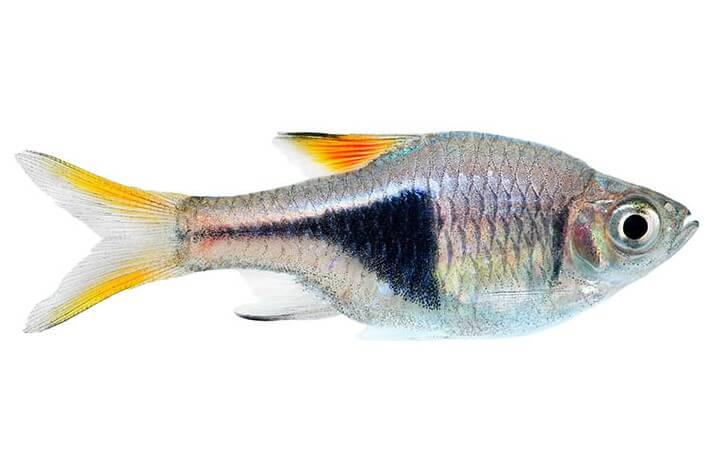
Harlequin Rasbora is a small fish, its size in an aquarium rarely exceeds 4 cm. The body is tall, laterally compressed, the caudal stem is thin. The pectoral and pelvic fins are pink, the back and caudal fins are red. The back is olive green, the abdomen is silvery. A characteristic feature is a large black wedge-shaped spot that runs from the tail to the middle of the body.
Habitat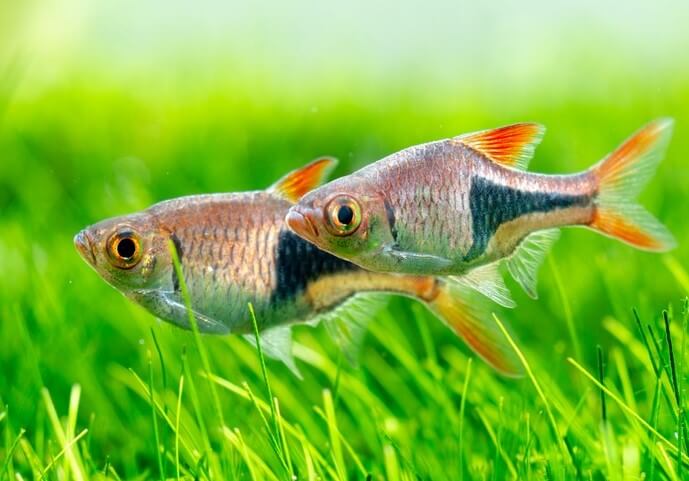
In nature, Harlequin Rasbora inhabits the water bodies of Southeast Asia: Thailand, Singapore, Borneo, Sumatra, Malaysia. Prefers rivers and streams flowing under the canopy of dense jungle. Due to the large litter and decomposition of roots, the water becomes soft and acidic, acquires a rich “tea shade”.
Care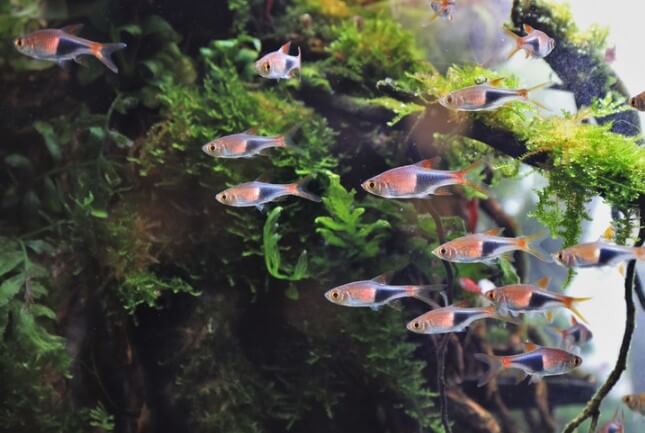
To keep Harlequin Rasbora, you need an aquarium with a volume of 40 liters or more. The fish is schooling, so the number of individuals should be at least 6-7. It is best to use dark soil and dense thickets of plants as decorations, which will allow the fish to hide if necessary. It would be useful to add natural driftwood, which will release tannins into the water, creating an environment close to nature.
Filtration should not be very powerful, fish do not like strong currents in the aquarium. Dimmed light is recommended, as bright lighting causes stress in the fish and, often, fading of color.
Optimum water parameters for the content: T = 23-28 ° C, pH = 6.5-7.8, GH = 2-12. Harlequin Rasbora prefers soft and acidic water, but due to its high adaptability, it lives well in aquariums with higher rigidity. However, the water will have to be softened to dilute. Weekly it is necessary to replace up to 25% of the water with fresh water.
The aquarium for this fish should be densely planted with plants. The best option would be species that grow in reservoirs in the historical homeland of fish, for example, Cryptocorynes or Aponogetons, although any others will do. It is advisable to place floating plants on the surface of the water: hornwort, pistia.
Harlequin Rasbora prefers to stay in the upper and middle layers of water. Life expectancy up to 3-4 years.
Compatibility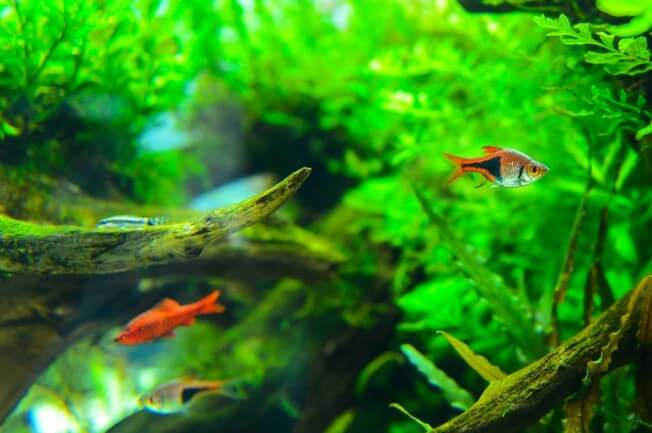
Harlequin Rasbora is one of the most peaceful fish. Harlequin rasbora gets along well with almost all calm views.
You should not keep these fish with fish that are very different in size. Despite their activity, they can fall prey to larger fish.
Feeding
In nature, these fish feed on worms, insect larvae, and zooplankton. When keeping in an aquarium, it must be borne in mind that the fish has a small mouth, so the food should not be very large. They prefer to eat near the surface of the water. It is necessary to feed the fish with a small portion of food. Do not overfeed your fish or leave a lot of food in the aquarium.
Reproduction and Breeding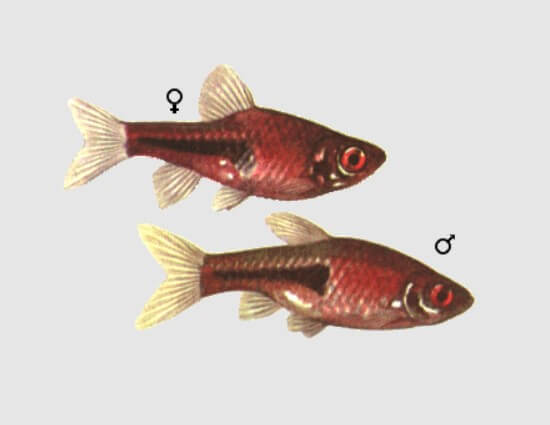
Harlequin Rasbora reaches puberty at the age of 9-12 months. You can distinguish between a female and a male by the shape of the body and the black spot in the form of a wedge. Males are brighter in color, and females have a rounder belly. Wedge in males is sharper and thinner, in females – rounded.
Breeding is very difficult, primarily due to the need for very soft water. Before spawning, producers must be planted and abundantly fed for a couple of weeks. A spawning aquarium should have a volume of at least 30 liters. It is advisable to plant Cryptocoryne or other plants with wide leaves in the spawning grounds. The water in the spawning area should be very soft, usually within 2-4 dGH, temperature – 26-28 ° C. The water level should not exceed 20 cm.
In the evening, a group of fish (2 males and 3-4 females) is planted in a prepared aquarium and left until morning. Spawning occurs with the first rays of the sun. First, mating dances of males follow, which stimulate the female to spawn. When the female is ready, she turns her belly upside down under a wide leaf of the plant and attaches the eggs to it. The male fertilizes them immediately. The process can take several hours, during which time the female lays up to 100 eggs, after which the parents must be removed from the aquarium.
The incubation period depends on the water temperature and can last 24-36 hours. The fry begins to swim on their own after a week.

